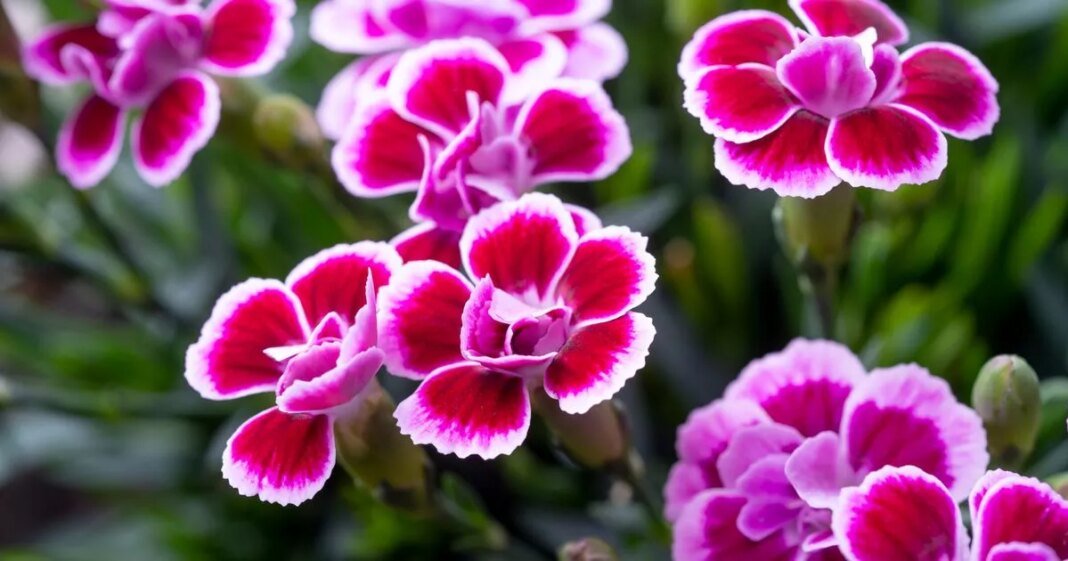It can be hard to commit to growing plants over the summer if you’ve planned an extended getaway – or if you’re a little lazy. Fortunately, not all plants need constant watering.
Some flower species actually thrive in drier conditions. Many plants have evolved to be drought-tolerant, especially those that originate from warmer or desert climates. And while a lack of rain isn’t usually a British problem, the UK has been known to experience heatwaves and droughts during the summer season.
Luckily, experts from Southern Living have compiled a list of 10 flowers that don’t need much H20:
Native to North America, these gorgeous blood-orange flowers are frequently found growing by beaches. This means they’re accustomed to drier climates and high temperatures.
If you want to see them flourish, clip their old flowerheads to allow new growth. As an added bonus, these sweet flowers are known to attract butterflies to your garden.
The clue is in the name – these elegant flowers enjoy basking in the sun. They are native to the tropics and are distinctive for their tall flowerheads that come in blue, pink and purple.
To take care of them properly, they only need occasional deadheading. They are also butterfly magnets, so gardeners can enjoy an influx of the fluttery winged insects this summer.
Southern Living describes the globe amaranth as “a lazy gardener’s dream”. They are easy to grow from seed and don’t require deadheading.
They’re beautiful to look at, too. Their compact blooms come in electric purples and deep pinks – adding eye-catching pops of colour to your garden.
These delicate, trailing flowers come in an irresistible shade of sunset red and make fantastic flowers for a hanging basket. They require minimal maintenance and prefer less water.
These tiny yellow flowers can add much-needed joy to any garden. Better still, they are incredibly low maintenance and can be pretty much left to their own devices.
They don’t need deadheading or much watering. Just make sure they are receiving at least six hours of direct sunlight a day and are placed in well-draining soil.
Named so for its ability to attract butterflies and other pollinators, the butterfly bush is a must for any garden. Its graceful purple flowers add an unmistakable regal look.
Plus, it’s also ideal for anywhere that may go through a period of drought. The bush can survive for several weeks without any water.
These purple plants are already well-loved for their distinctive fragrance. But it turns out they’re also great for an absent gardener.
Native to the sunny Mediterranean, lavenders are accustomed to periods of little rain and high heat. Simply place them in a sunny spot and allow them to freshen up your garden.
These tall, pink flowers will brighten up any home. Plus, their bright blooms are fantastic magnets for pollinators, bringing life to your lawn.
It’s advisable to deadhead their old blooms to allow for new flower growth. However, if you don’t, Southern Living advises that their old seeds make great food for finches.
These five-pronged blooms are mainly native to Europe and Asia. With their deep pink hues, they make a gorgeous addition to your garden.
Plus, they don’t require much watering. They don’t enjoy extreme midsummer temperatures, however this is unlikely to be a problem in a British garden.
This is a must for anyone who loves cats! These tall drought-resistant plants somewhat resemble lavender, however they come with their own lemony-mint scent – which is known to draw felines to your yard.
At Reach and across our entities we and our partners use information collected through cookies and other identifiers from your device to improve experience on our site, analyse how it is used and to show personalised advertising. You can opt out of the sale or sharing of your data, at any time clicking the “Do Not Sell or Share my Data” button at the bottom of the webpage. Please note that your preferences are browser specific. Use of our website and any of our services represents your acceptance of the use of cookies and consent to the practices described in our Privacy Notice and Cookie Notice.



